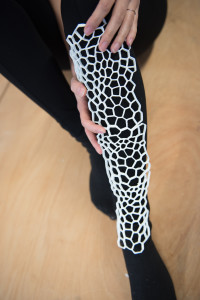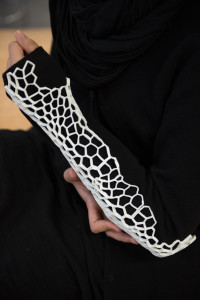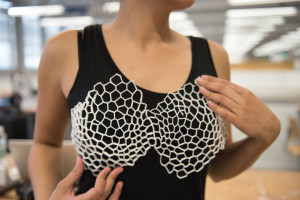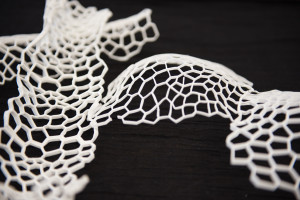11. January 2016
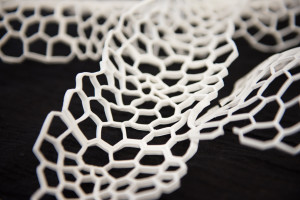
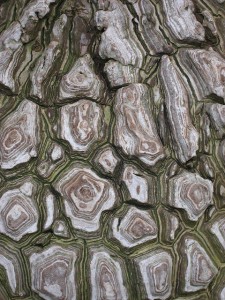
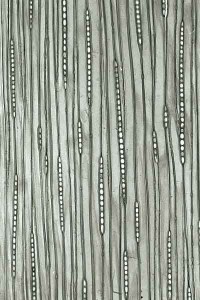
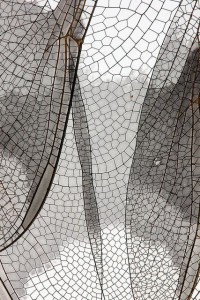
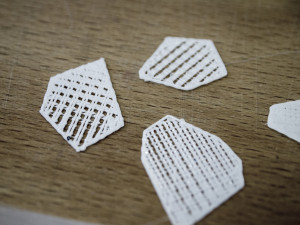
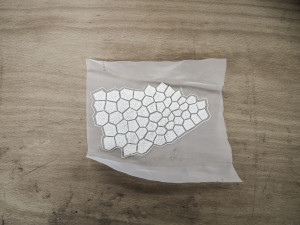
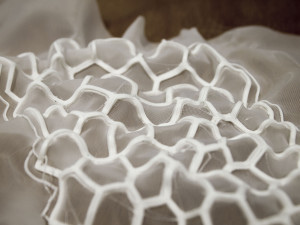
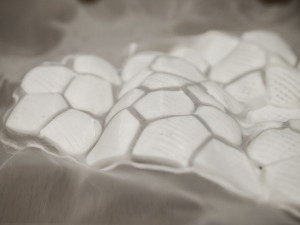 DESTROYING
After brainstorming through human action terms that would fit in well with our experiments from the previous week we set our minds on destroying. We were very interested in producing an object that could be used directly on the human body for protection and testing the limits of using 3D printing for such an object. In particular, we were fascinated by the concept that the human body is constantly changing and reshaping, and we wanted to develop something that would adapt to these changes.
RESEARCH
Experiments from the previous week revealed that 2D patterns printed in PLA fillament could be heated up with a hand held hot air dryer and formed and reformed into different 3D structures. We researched multiple projects that already make use of 3D printing to create casts for broken bones or for sports protection.
TESTING
We carried out a series of tests including printing directly on foam, printing different shapes, and using a flexible fillament instead of PLA. We also tested the limits of the heating method and formed our 3D printed surface onto different body parts and tested how separately printed parts could be connected to each other using heat.
DESTROYING
After brainstorming through human action terms that would fit in well with our experiments from the previous week we set our minds on destroying. We were very interested in producing an object that could be used directly on the human body for protection and testing the limits of using 3D printing for such an object. In particular, we were fascinated by the concept that the human body is constantly changing and reshaping, and we wanted to develop something that would adapt to these changes.
RESEARCH
Experiments from the previous week revealed that 2D patterns printed in PLA fillament could be heated up with a hand held hot air dryer and formed and reformed into different 3D structures. We researched multiple projects that already make use of 3D printing to create casts for broken bones or for sports protection.
TESTING
We carried out a series of tests including printing directly on foam, printing different shapes, and using a flexible fillament instead of PLA. We also tested the limits of the heating method and formed our 3D printed surface onto different body parts and tested how separately printed parts could be connected to each other using heat.
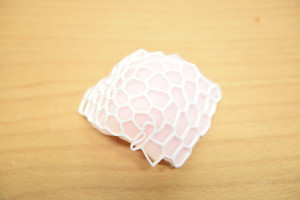
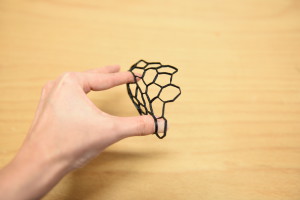
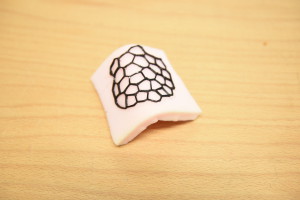
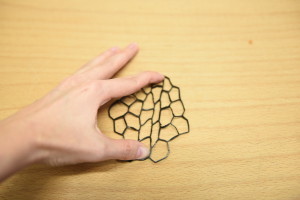 FINAL FORM
We arrived at a final form that could be used on different parts of the body - in this case the lower arm/elbow section of the body or the lower leg/ shinbone part. In theory, this same form could be used for stabilizing a broken bone and for protection during sports. Hypothetically, the same mouldable 2D pattern could be heated into a 3D shape and moulded onto multiple parts of the body, depending on current needs or bodily changes.
FINAL FORM
We arrived at a final form that could be used on different parts of the body - in this case the lower arm/elbow section of the body or the lower leg/ shinbone part. In theory, this same form could be used for stabilizing a broken bone and for protection during sports. Hypothetically, the same mouldable 2D pattern could be heated into a 3D shape and moulded onto multiple parts of the body, depending on current needs or bodily changes.
